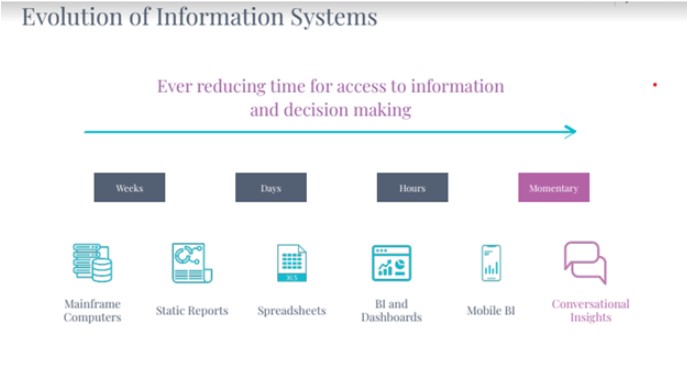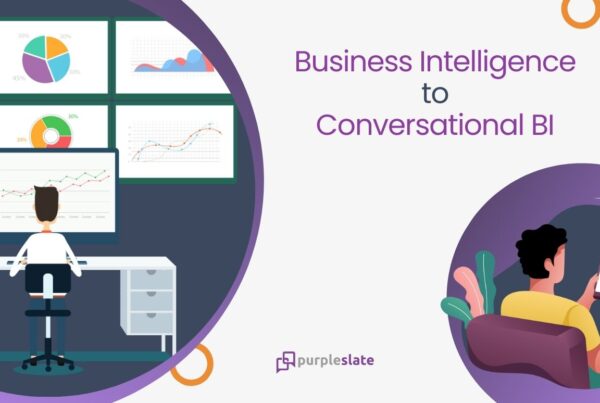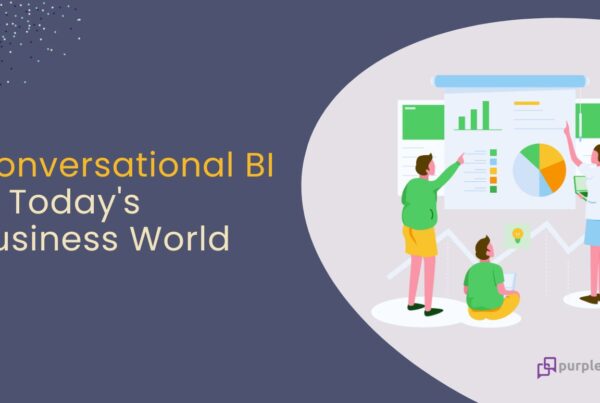
Introduction
In the age of big data, businesses are struggling to keep up with the sheer volume of information they’re collecting. Information overload is a real problem for businesses of all sizes, and it can lead to missed opportunities, wasted resources, and bad decision-making.
Information Overload in a Data-Driven World
“The Global DataSphere is expected to more than double in size from 2022 to 2026” – John Rydning, Research Vice President, IDC
To understand information overload, you must recognize the need to consume data. Data consumption is an important aspect of the modern business environment. Businesses now depend on data to inform their decision-making processes. As such, data is an essential part of almost every business function. It’s also used to inform important decisions, such as which customers to target and how to reach them. At the same time, businesses now collect more data than ever before. This means that decision-makers have access to a huge range of information. But it also means that companies must work hard to make sense of all the available data. As such, it’s important to recognize the need to consume data. You also need to channel this data toward decision-making.
“We’ve begun to realize that having so much data is not necessarily as valuable as we thought — in many ways, it’s becoming more of a liability than an asset” – Forbes
Many factors contribute to Information overload. However, one key factor is the rise of digital business. We now live in a world that’s dominated by digital technology. Digital tools, processes, and services are now part of our daily lives. As a result, we now collect and generate more data than ever. This, in turn, means that businesses now have access to more data than ever before. As such, there’s a temptation to collect as much data as possible, even when it becomes excessive and this happens. There is a definite step that needs to be taken explained below.
Streamline the data collection process
A key step to preventing information overload, you need to streamline your data collection process. Businesses now collect an incredible amount of data, and data volumes are only expected to increase. As such, businesses need to make sure they prioritize and streamline their data collection efforts.
This will make it easier for decision-makers to understand the information they have available. It will also make it easier for them to interpret this information. In this way, you can make better use of your data. It’s important to remember that collecting data is only the first step. You also need to make sure it’s easily accessible and actionable. Otherwise, it’s likely to cause problems. Data can be a useful tool, but it can also be a source of distraction. But these quick “home remedies” won’t have a long-term effect on information overload. For that, it’s imperative to know why there is an information overload and which villain has played a key role behind the scenes for a long time.
Dashboards – The Modern Day Darth Vader!
The narrative has always been the same. Organizations are effective at collecting big data but are struggling with handling and deriving insights from the data. True, but what’s the solution pitched for combating this disaster? Dashboards. They started with the aim of reducing dependencies on the internal IT teams to ingest and consume data for business decisions. Creating dashboards did not require much hard coding with most of the functionalities inbuilt and easily executed with a click and drag.
However noble the intention of the dashboards may be, they’ve morphed into anything but “self-serve”. These tools’ complexity has grown over time. They now have sophisticated operations, with organizations employing data scientists having specific certifications. So in simple terms, dashboards are the modern-day Darth Vader.

And to top it all, the entire data world ignores the end user in this data consumption spectrum. Before pumping down petabytes of data in front of them, it’s imperative to ask this question. Who is consuming the data and why are they doing it? Are the dashboards loaded with all possible colors in the visible spectrum, really serving their purpose?
The answer to that question will be a big resounding NO! Because they’re showing everything.
Are all the graphs, charts, and other visualizations fitted in a 16:9 inch screen tighter than a New York Subway on Labor day, really useful?
The truth is that dashboards are full of vanity metrics much of them just serving the purpose of taking up space and effectively confusing the consumer.
There are three major problems with the “Darthboard”, explained below.
No Real-Time Data Updation
Most modern-day dashboards fail miserably when it comes to real-time data updation. Data scientists, business leaders, or any of the end users who are benefiting from this activity are forced to go back, and check if the data is updated, before analyzing the insights. This becomes tedious over time and much prone to human errors
Human Bias
Some of the end users who think they “know” the business inside out, at times ignore some of the details presented in a dashboard. The information overload in a dashboard has made sure that the users need to prioritize the information they need to consume.
Siloed Insights
With many dashboards this problem is prevalent. The insights in a CEO’s dashboard will differ from those of a CMO’s. Topping that the redundant data design of the dashboards prevents integration of these two dashboards, thereby forcing them to create a new dashboard just for decisions on common metrics.
Alright, that’s the stage where today’s data analytics lie, cluttered with unnecessary, redundant data visualizations. So, is there a way out of this?
Get Ready to Talk to Your Data
“Gartner believes that moving forward, the dashboards will be replaced with automated, conversational, mobile and dynamically generated insights customized to a user’s needs and delivered to their point of consumption.”
Modern-day analytics tools powered by conversational AI, advanced machine learning algorithms, and natural language processing as well as understanding have made the above statement possible.
This approach has its roots in the most overlooked, yet one of the most ancient concepts. The idea of Language as an interface. It’s the age of simplification, convenience, and most importantly speed which is amply represented below in how information systems evolved.

In this race, the need for speed is what will set your business apart with an insane edge. The need for speed across all business requirements, the story of data being no different. So how does one achieve this speed? By asking the right questions about your data while ignoring the flab of useless information.
This is the definite reason why conversational insights is the future of business intelligence, to satisfy the momentary needs for information access and decision making. Some of the momentary needs for decision-making happen in the following situations.
- During a meeting
- Researching for a project
- On the move, while driving a car
- For an elevator pitch
The list can go endless. But these are some of the most common scenarios anyone can face in the system. Let’s take a look at how the coming decade is going to be truly conversation driven with a CAI powered analytics solution.
The Three Tenets Governing Conversational Insights
We define conversational insights as humans using conversations and language as an interface to derive meaningful insights from any data storage system. Conversational insights according to us are the next obvious evolution in the field of business intelligence. So what makes conversational insights tick? What are the three pillars that drive conversational insights?
Simplicity
Simplicity forms a core tenet of conversational insights. The whole concept is designed to disrupt the way data is consumed, by providing pointed answers to the questions users ask in the language they speak to help them uncover the insights they seek. The language will be the interface without the need to learn high-end query languages to fetch data.
Integration
Today’s data world is still miles behind with siloed dashboards, having a reactive approach, and consuming historical data. Conversational insights aim to break that rut by providing a collaborative platform for all data consumers to derive insights from real-time data. Users can control all these actions from the devices of their choice.
Security
The world of data is fickle and ever-changing, and it’s exactly because of this, that data security laws are tight to battle the rising privacy concerns. A conversational insights tool will also be secure in design with properly designed access controls. After all, it’s designed to satisfy momentary needs and the need-to-know factor is inbuilt.
The Future of Business Intelligence Might Increasingly be Conversation Driven
We believe that conversation insights is here to stay. Fortune 500 organizations are slowly but steadily embracing search-driven or conversation-driven data analytics tools specifically because of the advantage they possess. It might be time to reimagine the way data analytics have functioned and make way for a future powered by conversation-driven business intelligence.
To know more about how conversational insights can help leaders information overload in check, feel free to check out our webinar Reimagine Business Intelligence with a Conversational Approach




